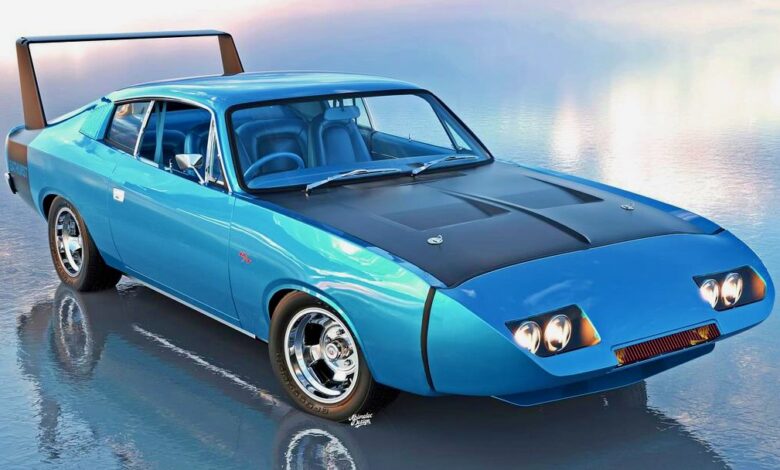
In 1969, Dodge was in a head-to-head battle with Ford on the NASCAR scene. Dodge struggled on bigger super-speedway tracks due to the poor aerodynamics of its popular Dodge Charger. After failing to dominate with its more aerodynamic Charger 500 model, Chrysler Corporation put its best engineering on a project that would ultimately turn the tables on the high-speed tracks of NASCAR.
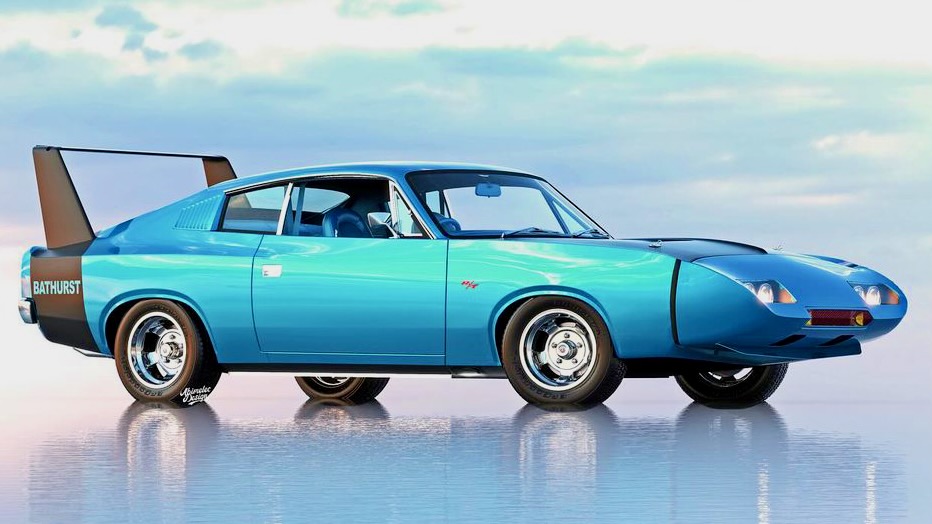
The 1969 Dodge Charger Daytona solved those aero issues thanks to a 23-inch tall stabilizer wing on the rear, a massive metal nose cone that replaced the Charger’s traditional upright grille, a flush rear window, front fender cooling scoops, and stainless steel A-pillar covers. The car won 6 super-speedway races in 1969 and 1970 before NASCAR banned aero cars. Daytonas, however, did continue to compete in series, racking up numerous wins in both USAC and ARCA.
Buddy Baker was the first driver to break the 200 mph mark on March 24, 1970, at Talladega in his No. 99 Chrysler Engineering Dodge Charger Daytona.
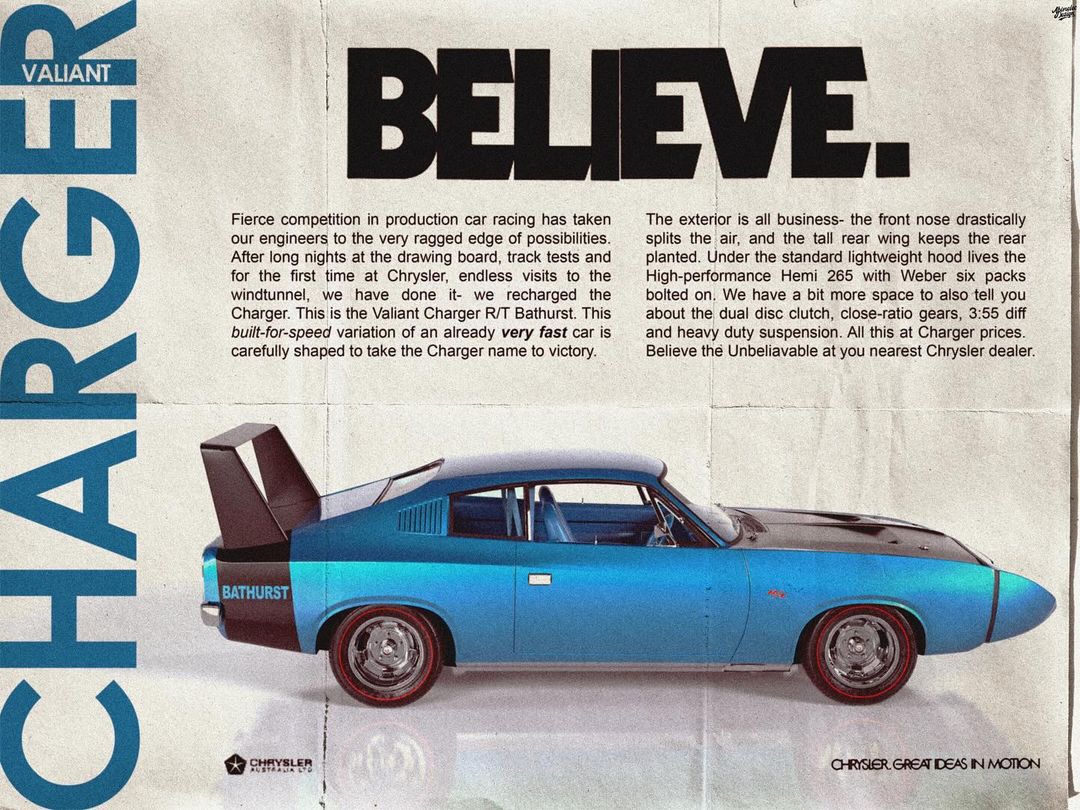
Starting in 1971, Chrysler was busy launching its Valiant Charger in Australia. Although it wore the Charger nameplate, this car was based on the A-Body architecture instead of the U.S. B-Body Charger. The Valiant Charger featured a virtually identical front suspension, wider fenders, and a wider rear axle, which allowed the Australian model to have a much wider wheels and tires setup than the U.S.-spec A-Body.
Designed by legendary Chrysler designer Robert Hubbach, the Valiant VH Charger became a popular platform for Chrysler’s participation in car racing in Australia.
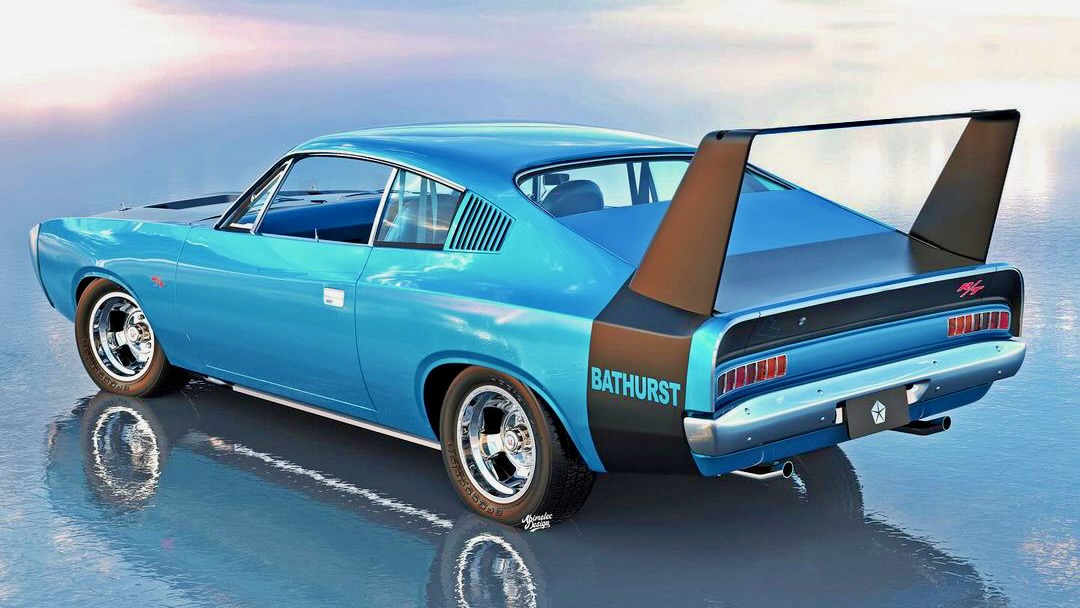
One of the powerplants under the hood of the Valiant VH Charger was the 4.3-liter (265 cubic-inch) HEMI inline-6 cylinder engine. Introduced in 1971, the HEMI-6 engine featured a new cylinder block with a bigger bore diameter of 3.91 inches (99 mm), which was the same as many of Chrysler’s small-block V8s, and a head design that featured more hemispherical-shaped combustion chambers with larger valves.
Those who ordered a Valiant Charger R/T and checked the E37 package got a HEMI-6 with triple sidedraught Weber carburettors, called the “SIX PACK”. The SIX PACK engine became the basis for Chrysler’s touring race car for 1971. And while the Valiant Charger R/T is probably the most remembered Chrysler to race at the famed Bathurst 500, it never claimed victory, unlike its predecessors.
With that being said, our friend the ambitious and creative Abimelec Arellano (@abimelecdesign) created another “What If” design. In his latest “What If” proposal, he created a Daytona-inspired package for the Valiant VH Charger dubbed the Charger Bathurst.
This time, the Australian Charger received the same aero treatment as the Charger Daytona. His Valiant Charger, R/T Bathurst design, looks like something Chrysler Corporation would have worked on in 1971. Complete with a replica advertisement; the design could fool the novice Mopar fan. We are impressed, as always, with Abimelec’s latest “What If” design.


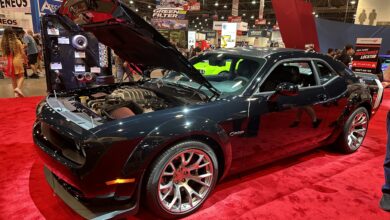
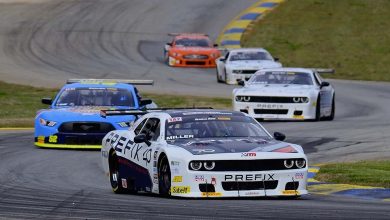
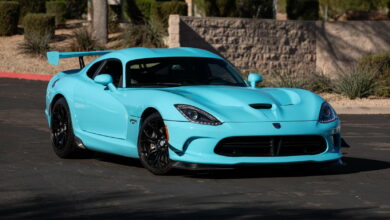

3 replies
Loading new replies...
Join the full discussion at the Mopar Insiders Forum →